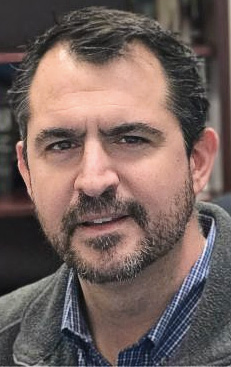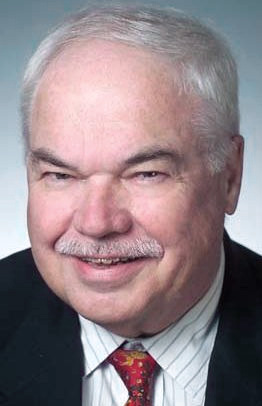

 When I was employed, I ran my own mail server and my own BlackBerry Enterprise Server, and I had things tuned pretty much exactly as I wanted them. My incoming mail got some custom processing that looked the sender's address up in my address book and assigned the message a category... I was a very happy email user. Now that I'm on my own, I've decided not to run my own server and all that software, and I've switched to Gmail and the T-Mobile BlackBerry server... Surprisingly, though, I'm mostly still happy... more
When I was employed, I ran my own mail server and my own BlackBerry Enterprise Server, and I had things tuned pretty much exactly as I wanted them. My incoming mail got some custom processing that looked the sender's address up in my address book and assigned the message a category... I was a very happy email user. Now that I'm on my own, I've decided not to run my own server and all that software, and I've switched to Gmail and the T-Mobile BlackBerry server... Surprisingly, though, I'm mostly still happy... more
 Traceroute is a network tool that helps determine the path packets take as they travel from one location to another, identifying all of the "hops" along the way. I wonder why they are called hops*? Almost all operating systems have traceroute utilities built in. The command is just that "traceroute", Windows systems abbreviate the command as "tracert" to deal with the 8.3 file naming convention of old... So, let's look at what information traceroute gives you. more
Traceroute is a network tool that helps determine the path packets take as they travel from one location to another, identifying all of the "hops" along the way. I wonder why they are called hops*? Almost all operating systems have traceroute utilities built in. The command is just that "traceroute", Windows systems abbreviate the command as "tracert" to deal with the 8.3 file naming convention of old... So, let's look at what information traceroute gives you. more
 The penny dropped when I started looking at cloud computing as a service rather than a new technology. In that respect it is more like Google search and a DotCom development than a set of software and hardware tools. That was what I needed to get a better strategic grip on this new concept. As with all services, business strategies are key here, rather than technologies. As soon as it is seen as a technology customer issues often come in second, which then leads to a technology looking for a market... more
The penny dropped when I started looking at cloud computing as a service rather than a new technology. In that respect it is more like Google search and a DotCom development than a set of software and hardware tools. That was what I needed to get a better strategic grip on this new concept. As with all services, business strategies are key here, rather than technologies. As soon as it is seen as a technology customer issues often come in second, which then leads to a technology looking for a market... more
 In the world of DNS, there are two types of DNS servers, 'recursion disabled' and 'recursion enabled'. Recursion disabled servers, when asked to resolve a name, will only answer for names that they are authoritative for. It will absolutely refuse to look up a name it does not have authority over and is ideal for when you don't want it to serve just any query. It isn't, however, very useful for domains you don't know about or have authority over... more
In the world of DNS, there are two types of DNS servers, 'recursion disabled' and 'recursion enabled'. Recursion disabled servers, when asked to resolve a name, will only answer for names that they are authoritative for. It will absolutely refuse to look up a name it does not have authority over and is ideal for when you don't want it to serve just any query. It isn't, however, very useful for domains you don't know about or have authority over... more
As founder and CTO of Ellacoya Networks, a pioneer in Deep Packet Inspection (DPI), and now having spent the last year at Arbor Networks, a pioneer in network-based security, I have witnessed first hand the evolution of DPI. It has evolved from a niche traffic management technology to an integrated service delivery platform. Once relegated to the dark corners of the central office, DPI has become the network element that enables subscriber opt-in for new services, transparency of traffic usage and quotas, fairness during peak busy hours and protection from denial of service attacks, all the while protecting and maintaining the privacy of broadband users. Yet, DPI still gets a bad rap... more
Trademark issues are emerging with the upcoming introduction of new generic top-level domains on the internet, and the board members of the body introducing the names has passed the ball back to intellectual property experts to find answers. The Intellectual Property Constituency of the Internet Corporation for Assigned Names and Numbers (ICANN) has been asked to work out a viable solution "no later than 24 May 2009." Trademark issues have been defined as one of four overarching issues still to be solved before ICANN can finalise the application procedure for the next hundreds or thousands of top-level domains from .eco to .music. more
I received an e-mail from Google Adsense about its new interest-based advertising feature. The latest feature of Google AdSense allows Google to track the behavior of users who click on ads on their AdSense network. It also allows Google users to ‘select’ their interests—this way they would view advertisements based on their category of interest…
more
 In part 1, we explained that the DKIM "d=" value identifies the domain name which signed the message, which may be a different domain name from the author of the message. Tying the signing and author domains together will require an additional standard: Author Domain Signing Practices (ADSP). In IETF parlance, the "author domain" is the domain name in the From: header, so ADSP is a way for the author domain to publish a statement specifying whether any other domain name should ever sign a message purporting to be From: that author domain... more
In part 1, we explained that the DKIM "d=" value identifies the domain name which signed the message, which may be a different domain name from the author of the message. Tying the signing and author domains together will require an additional standard: Author Domain Signing Practices (ADSP). In IETF parlance, the "author domain" is the domain name in the From: header, so ADSP is a way for the author domain to publish a statement specifying whether any other domain name should ever sign a message purporting to be From: that author domain... more
 Many of us are familiar with network effects within telecommunications. Fundamentally, the notion is that as the number of participants in a network increases, the value of that network increases superlinearly. Though many different theories exist about how best to value these networks, the general idea is that the more people on a network, the more benefits accrue to everyone on the network... more
Many of us are familiar with network effects within telecommunications. Fundamentally, the notion is that as the number of participants in a network increases, the value of that network increases superlinearly. Though many different theories exist about how best to value these networks, the general idea is that the more people on a network, the more benefits accrue to everyone on the network... more
 From the beginning, the Internet has been viewed as something special and "unique." For example, in 1996, a judge called the Internet "a unique and wholly new medium of worldwide human communication." The Internet's perceived novelty has prompted regulators to engage in "Internet exceptionalism," crafting Internet-specific laws that diverge from regulatory precedents in other media. Internet exceptionalism has come in three distinct waves... more
From the beginning, the Internet has been viewed as something special and "unique." For example, in 1996, a judge called the Internet "a unique and wholly new medium of worldwide human communication." The Internet's perceived novelty has prompted regulators to engage in "Internet exceptionalism," crafting Internet-specific laws that diverge from regulatory precedents in other media. Internet exceptionalism has come in three distinct waves... more
 Defendant Shui registered the domain name citybank.org and established a site there promoting financial services, sometimes using the mark CITIBANK. The real Citibank, armed with its trademark registrations in over 200 countries and over 50 years of use of its CITIBANK mark, filed suit against Shui under the Anticybersquatting and Consumer Protection Act, 15 USC 1125(d) ("ACPA")... Citibank sought $100,000 -- the maximum amount of statutory damages available under the ACPA, plus payment of Citibank's attorneys' fees... more
Defendant Shui registered the domain name citybank.org and established a site there promoting financial services, sometimes using the mark CITIBANK. The real Citibank, armed with its trademark registrations in over 200 countries and over 50 years of use of its CITIBANK mark, filed suit against Shui under the Anticybersquatting and Consumer Protection Act, 15 USC 1125(d) ("ACPA")... Citibank sought $100,000 -- the maximum amount of statutory damages available under the ACPA, plus payment of Citibank's attorneys' fees... more
 Mobile WiMAX, with the release of 2×2 MIMO chips in 2008, gives WiMAX a lead of two or so years on its major competitor -- the 3GPP's LTE. However, 3G cellphones using 3GPP UMTS technologies, extended to higher speeds with HSPA, is widely used in handsets in many countries. In North America, 3GPP2 CDMA2000 and EV-DO are widely used, but these are likely to be replaced over time by LTE and to some extent WiMAX. more
Mobile WiMAX, with the release of 2×2 MIMO chips in 2008, gives WiMAX a lead of two or so years on its major competitor -- the 3GPP's LTE. However, 3G cellphones using 3GPP UMTS technologies, extended to higher speeds with HSPA, is widely used in handsets in many countries. In North America, 3GPP2 CDMA2000 and EV-DO are widely used, but these are likely to be replaced over time by LTE and to some extent WiMAX. more
 When I wrote the BuddeComm analysis on the introduction of Apple's iPhone I commented that the most significant element of this event was that it would begin to create cracks in the flawed business models of the mobile operators, who are desperately hanging on to their closed networks very much like the fixed operators were fighting tooth and nail against opening up their networks. We have seen that the fixed operators have largely lost this battle and we predict that the future of the mobile networks will be no different... more
When I wrote the BuddeComm analysis on the introduction of Apple's iPhone I commented that the most significant element of this event was that it would begin to create cracks in the flawed business models of the mobile operators, who are desperately hanging on to their closed networks very much like the fixed operators were fighting tooth and nail against opening up their networks. We have seen that the fixed operators have largely lost this battle and we predict that the future of the mobile networks will be no different... more
 I've been posting photos and snippets during eComm 2009 this week, but composing my overall impressions has been another matter. Sitting through 3 days mostly filled with continuous 15 minute presentations is a surefire recipe to fry your brain, and most people I talked to were topped out well before things wrapped up Thursday night. It's information overload of the highest -- and best -- order... Here's my top-line takeaway, and reading the rest of this post is really just detail. But it's detail you'll probably love if you really want to know what you missed... more
I've been posting photos and snippets during eComm 2009 this week, but composing my overall impressions has been another matter. Sitting through 3 days mostly filled with continuous 15 minute presentations is a surefire recipe to fry your brain, and most people I talked to were topped out well before things wrapped up Thursday night. It's information overload of the highest -- and best -- order... Here's my top-line takeaway, and reading the rest of this post is really just detail. But it's detail you'll probably love if you really want to know what you missed... more
 The Mexico City ICANN Conference was more eventful than some of us had anticipated. Among the highlights was Paul Twomey's announcement that he is stepping down as President and CEO of ICANN effective on June 30... Before the Conference, ICANN had released the second draft of its Guidebook for new generic Top-Level Domains (gTLDs). It was not greeted with universal acclaim... more
The Mexico City ICANN Conference was more eventful than some of us had anticipated. Among the highlights was Paul Twomey's announcement that he is stepping down as President and CEO of ICANN effective on June 30... Before the Conference, ICANN had released the second draft of its Guidebook for new generic Top-Level Domains (gTLDs). It was not greeted with universal acclaim... more
Sponsored byVerisign

Sponsored byIPv4.Global

Sponsored byVerisign

Sponsored byCSC

Sponsored byDNIB.com

Sponsored byRadix

Sponsored byWhoisXML API
